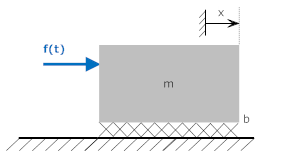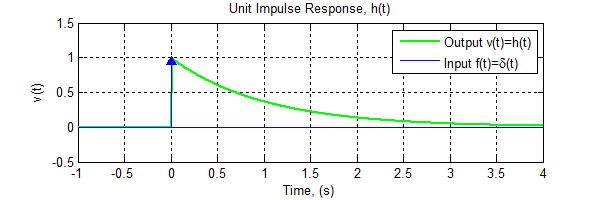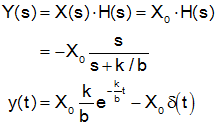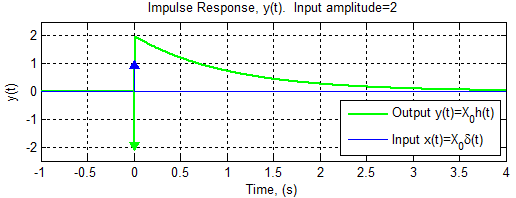
Contents
A time domain description of the relationship between the unit impulse response and unit step response is given here. It may be useful to read it to develop your understanding, but it is not absolution necessary.
Before reading this section you must first become familiar with the unit impulse function.
Since the unit step function,γ(t), is closely related to the unit impulse, δ(t), it should not be surprising that the unit impulse response (the response of a system to a unit impulse) is also closely related to the unit step response. To develop this relationship, consider first the unit step response of a system.

In this diagram the input is the unit step function,γ(t), and the output is the unit step response, yγ(t). If we multiply the input in Laplace by "s" (i.e., we differentiate the input step function in time), we also multiply the output by "s" (or differentiate the step output).

The impulse response of the system is given by the system transfer function. For this reason the impulse response is often called h(t).
If the transfer function of a system is given by H(s), then the impulse response of a system is given by h(t) where h(t) is the inverse Laplace Transform of H(s).

A less significant concept is that the impulse response is the derivative of the step response.

Note: Though it is not yet apparent why the impulse response may be useful, we will see later (with the convolution integral) that the impulse response lets us solve for the system response for any arbitrary input.
To find the unit impulse response of a system we simply take the inverse Laplace Transform of the transfer function.
Note: the step response of this system was derived elsewhere.
If the input force of the following system is a unit impulse, δ(t), find v(t). Also shown is a free body diagram.


Solution:
The differential equation
describing the system is

so the transfer function is determined by taking the Laplace transform (with zero initial conditions) and solving for V(s)/F(s)

To find the unit impulse response, simply take the inverse Laplace Transform of the transfer function

Note: Remember that v(t) is implicitly zero for t<0 (i.e., it is multiplied by a unit step function).
For m=b=1, we get:


Note: the step response of this system was derived elsewhere.
If the input force of the following system is an impulse of area X0, find y(t). Also shown is a free body diagram. Note the input is not a unit area, but has a magnitude of X0. Therefore all system outputs must also be scaled by X0.

Solution:
The differential equation
describing the system is

so the transfer function is determined by taking the Laplace transform (with zero initial conditions) and solving for Y(s)/X(s)

To find the unit step response, multiply the transfer function by the area of the impulse, X0, and solve by looking up the inverse transform in the Laplace Transform table (Exponential)

Note: Remember that v(t) is implicitly zero for t<0 (i.e., it is multiplied by a unit step function). Also note that the numerator and denominator of Y(s) are of the same order, so a step of long division is necessary when performing the partial fraction expansion.
For k=b=1, X0=2 we get:


Find the impulse response of the system represented by the differential equation

Solution:
Find the transfer function
and take the inverse Laplace Transform. Finding the
transfer function from the differential equation is straightforward.

We then look up the result in the Laplace Transform table.
